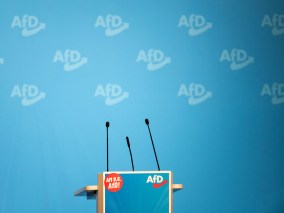My husband lives almost entirely in the past, generally finding it a more agreeable place to make his habitation as, often, do we. To sustain him, the television has recently screened a number of dramatic reconstructions of the last days of Harold Wilson, and on some other channel a retrospective of the Thatcher years under the would-be witty title Tory, Tory, Tory.
A snatch of film of Margaret Thatcher showed her, after her victory in the general election of 1979, standing in Downing Street saying, ‘Where there is doubt, may we bring faith. Where there is despair, may we bring hope.’ Some of those not well disposed to Mrs Thatcher thought it was pretty rich, coming from her, all the more so since the words were lifted from St Francis of Assisi, who is not often regarded as a prototype Thatcherite. Like those critics I continued for many years afterwards to presume that the prayer was indeed by St Francis, until I tried to find the thing in a collection of the holy man’s writings.
Francis (1181–1226) didn’t write much, though most of it is memorable stuff, and he certainly did not write the Downing Street prayer. It can be traced no earlier than 1912.
It first appeared in that year, in French, in a magazine called La Clochette, published by a pious organisation founded by Father Esther Bouquerel (1855–1923). Esther is an unusual name for a man, but the prayer, which begins ‘Lord, make me an instrument of your peace’, was well received. It caught the eye of the Marquis de La Rochethulon, who in 1915 sent a copy to the pope, Benedict XV, who was exhausting his energies trying to stop the first world war.
The prayer was published in the Vatican paper L’Osservatore Romano and in about 1920 it was printed by a French Franciscan on the back of images of St Francis under the title ‘Prière pour la paix’.







Comments
Join the debate for just £1 a month
Be part of the conversation with other Spectator readers by getting your first three months for £3.
UNLOCK ACCESS Just £1 a monthAlready a subscriber? Log in